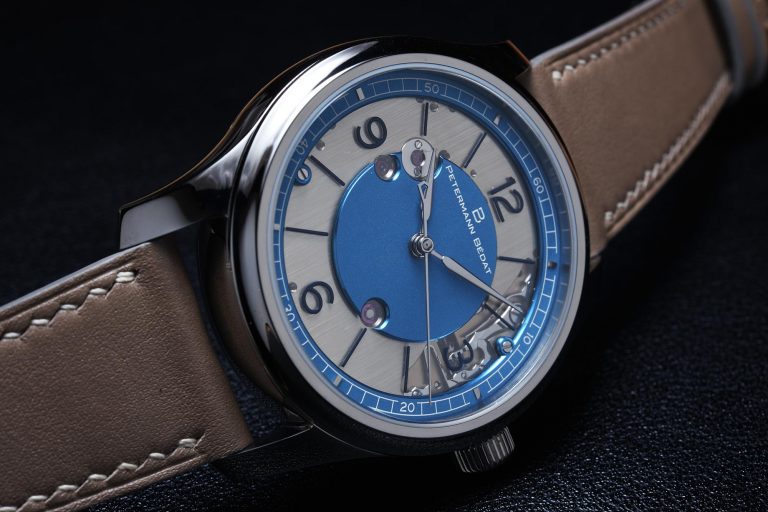Independent watchmaking has seen a serious rise of interest amongst watch collectors, with names like Philippe Dufour, Francois-Paul Journe, Kari Voutilainen and Rexhep Rexhepi have joined the pantheon of lauded artisans who are seen to have mastered their craft. Indicating a rise in recognition of their talent, this fame is also somewhat a vindication of their choice – abandoning the security of established brands, and forging their own path into the unknown. This choice in of itself presents inherent risks, especially when creating your own movement – a high-end one at that. Millennial watchmakers, Gael Petermann and Florian Bedat have taken the plunge into the deep, but not without extensive prior experience and knowledge of watchmaking principles and traditions. This has led to the creation of the much lauded 1967 watch which took out the Horological Revelation Prize at the 2020 Grand Prix d’Horlogerie de Genève (GPHG for short). In 2021, the watchmakers unveiled the 1967 Second Edition – lightweight and with an added pop of colour, housing the fine movement they are currently renowned for.


Gael Petermann and Florian Bedat both met at the Watchmaking School of Geneva in 2007, the both of them graduating in 2011. From there they went their separate ways for a while – Gael to A Lange & Sohne, and Florian to Harry Winston. When Harry Winston was sold to Swatch Group, Florian then made a move to A Lange & Sohne in Glashutte, at the suggestion of Gael, where he gained his experience building movements for the Lange 1 and the 1815 series to name a few. Gael moved between departments, going so far as to assemble perpetual calendars and chronographs at the German marque. After two and a half years, he decided to move back to Switzerland to work for Svend Andersen, but upon arriving, he found that Svend had no work for him. He struck a deal with Svend – Gael would work independently restoring watches for the likes of Christies in Svend’s workshop, but whenever Svend needed help, he would do so for free. It was here he learned about watches new and old, as well as what it was like to be an independent watchmaker through Svend Andersen. Meanwhile, Florian decided to make the move back to Switzerland where he could be closer to family and friends – he intended to service watches until another job came up.
However, Gael had other ideas, and ended up finding a workshop in his hometown of Renens, near Lausanne, near the famed Dominique Renaud (the Dominique Renaud of Renaud and Papi fame). Florian would join soon after Gael convinced him to make the move to Renens. Dominique would allow Gael the use of all of his machines, and when it came time to further develop his DR01 watch, Gael and Florian stepped in to assist in the construction and finishing of his watch. In return, the duo of Petermann Bedat did not ask to be paid, but instead, asked Dominique Renaud SA to develop a movement for them – a simple three hand watch, with hours minutes and seconds, but with a twist: a Deadbeat Seconds mechanism. This would eventually become the 1967, released in the summer of 2019, and would go on to win the Horological Revelation prize at the GPHG in 2020.
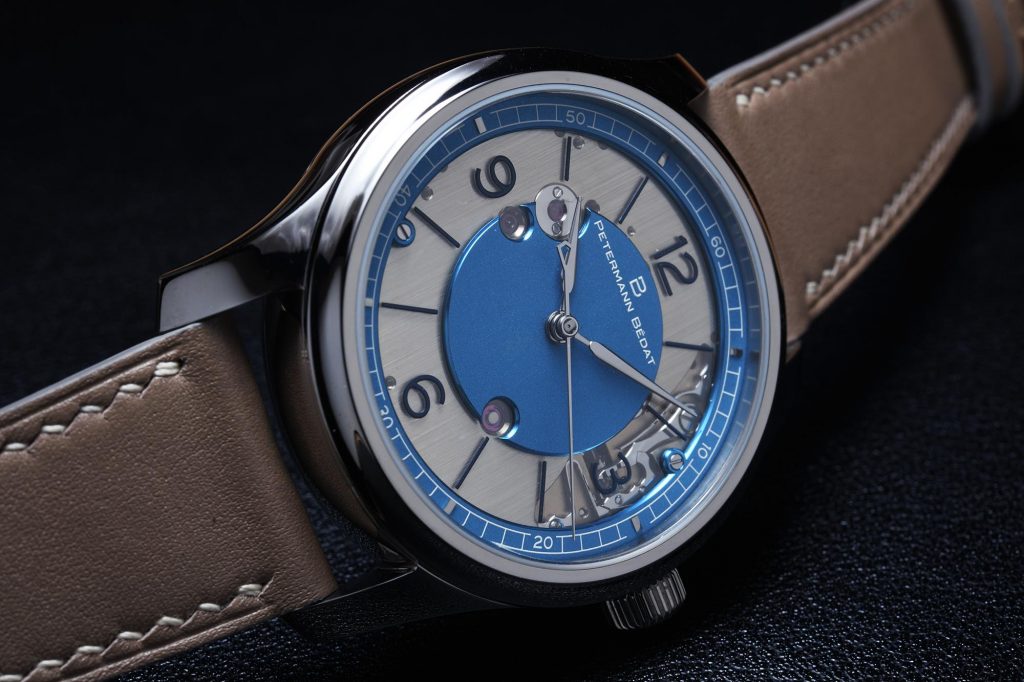
The 1967 Second Series gets its name from when the year the first quartz movements were produced. Boasting a 39mm case in grade 5 titanium, with a stunning blue dial made by Comblemine – the dial factory owned by Kari Voutilainen, the dial is made from sapphire crystal, with an anodised outer track and central plate in titanium. The central plate features cutouts that highlight the jewels involved in the movement – the red contrasting with the blue of the dial, and a unique set of hands was designed for this watch. The overall appearance of the watch is meant to evoke the 1960s as the name suggests, with its functional, yet elegant numerals on the dial, and minute track in white. Beneath the dial, you can see the warm tones of the German silver base plate that has been vertically grained, as well as the keyless works at 3 o’clock made of stainless steel that have been beveled and black polished by hand.
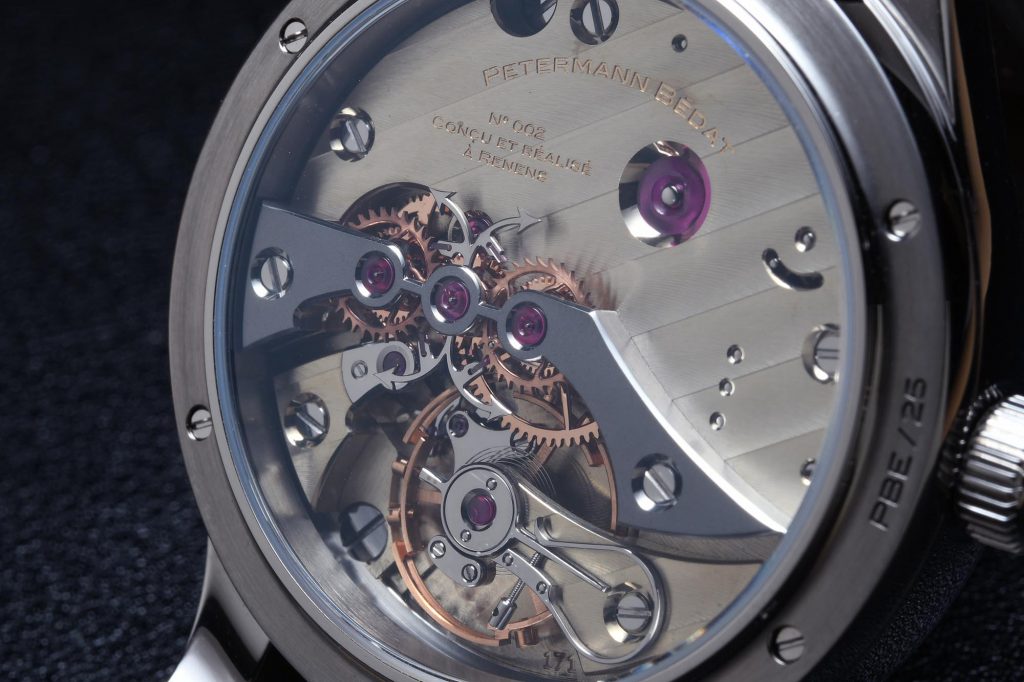
Flipping the watch over, you can see the movement developed in partnership with Dominique Renaud – the Calibre 171. On first glance, two things are very noticeable – the large jewels in which the wheels sit, especially the large jewel for the barrel, and the countersinks in which the jewels and the screws sit in. These seem to have been greatly accentuated – to highlight the fine finishing of the movement. Another more prominent feature is the bridge that traverses the full diameter of the movement. This is where the deadbeat seconds mechanism is incorporated into the watch, utilising the Gafner system. Invented by Robert Gafner, this form of the deadbeat seconds uses a complex anchor and ruby pallets, much like what you would see in a pallet fork and escape wheel, regulating the movement of the central seconds hand in 1 second jumps. This requires the storage of energy in the form of a small hairspring underneath these wheels, released at the right time to provide movement to the seconds hand.
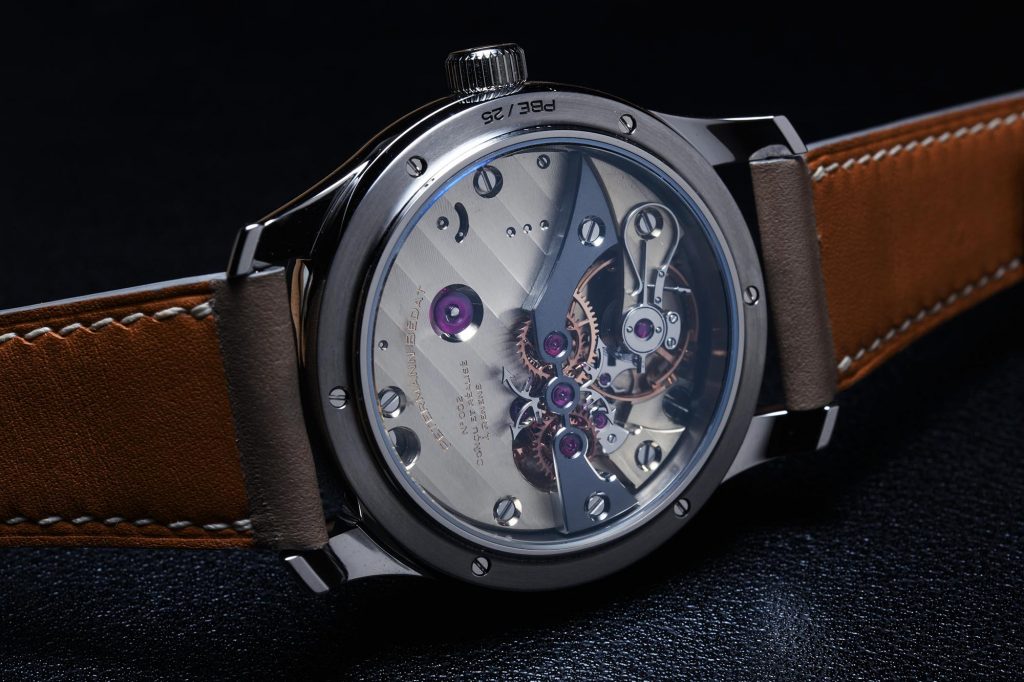
Interestingly, the deadbeat seconds bridge was finished with a mixture of “poudre du levant” (baking powder) and olive oil, and subsequently hand bevelled, creating an amazing visual effect that no doubt highlights the duo’s attention to detail. Geneva stripes can be seen on the German silver bridges, as well as a swan’s neck regulator, near the balance wheel. All of the steel parts have been finished with black polishing as well, appearing black at certain angles. Beating at a leisurely 18,000 vibrations per hour, this echoes the beat rate of many traditional pocket watches, and has a power reserve of 36 hours.
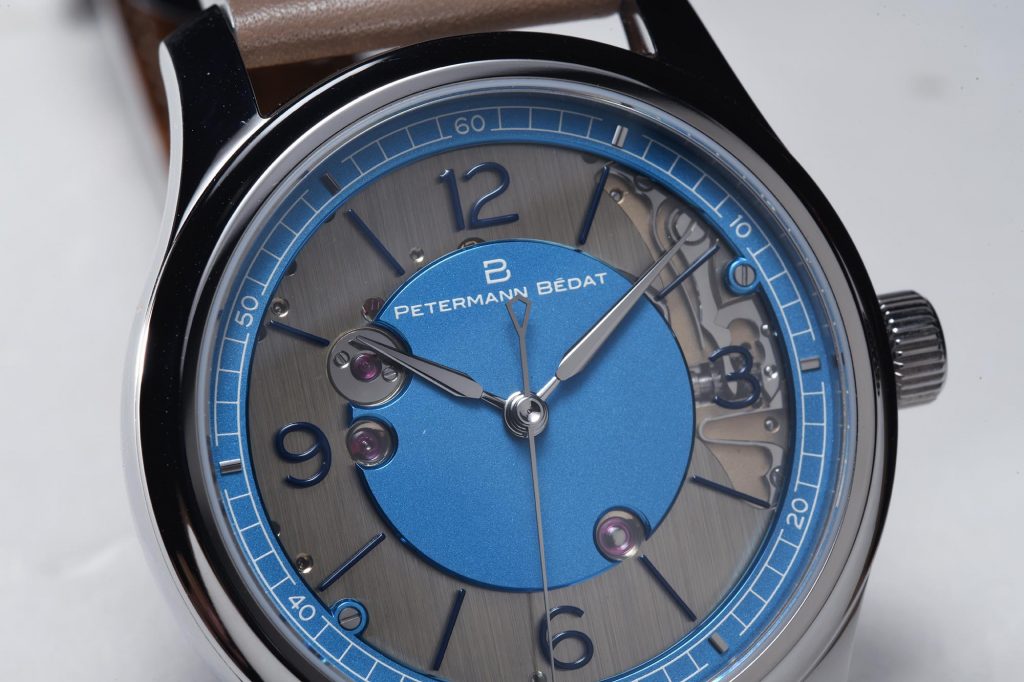
The Petermann Bedat 1967 Second Series will be limited to 25 pieces worldwide, and will no doubt be quickly spoken for. For any enthusiast of independent watchmaking, it represents a coming together of key personalities in this style of watchmaking – the dials of Kari Voutilainen, the movement development skills of Dominique Renaud, and the passion of Gael Petermann and Florian Bedat to make this watch come to fruition. This watch, therefore, is not only a tribute to watches of the past, but it represents the future of independent watchmaking, as well as the kindness of their seniors willing to pass down their years of knowledge to the next generation. If this is what the future of independent watchmaking looks like, then count us in.
Tech Specs
Case: Titanium Grade 5, 39mm diameter, 10.7mm thickness, sapphire glass, convex, anti-reflective coating
Dial and Hands: Made by Comblemine: sapphire, sand blasted, hand polished bevels, hour, minute and seconds hands finished by hand
Strap and Buckle: Hand sewn alligator, Titanium Grade 5 buckle
Movement: Calibre 171 in house movement with dead beat mechanism, German silver bridges and main plate, all steel parts in stainless steel, Breguet coil balance spring, 30mm diameter, 36 hour power reserve, frequency of 18,000 vibrations/hour, 29 jewels, 160 components
Limited Edition: 25 Pieces
Price: SGD 110,000


